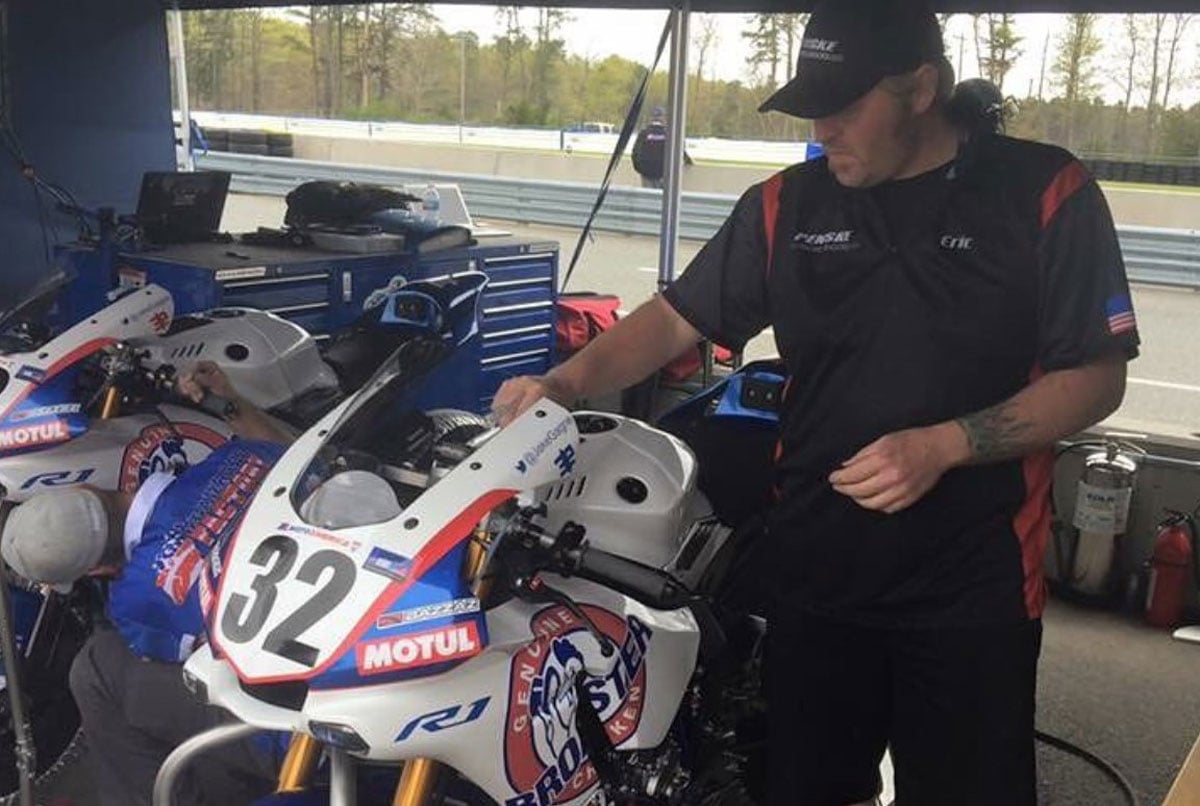How to Properly Set Your Motorcycle Front Suspension Sag & Why it Matters

February 14, 2022

Good news - there is an optimum setting for motorcycle suspension sag. The even better news is that it can and should be unique to YOUR application and how YOU like to set up your suspension, so YOU perform optimally.
As a refresher, sag is how much your motorcycle settles when you’re sitting on it. It’s measured by how much the forks and shocks compress under your weight, giving you an initial point to make adjustments in either direction.
So, why is it important to get your motorcycle front suspension sag setting right? Let’s dig in.
Front Suspension Sag: Proper Setup and Why it Matters
Setting your motorcycle front suspension sag before changing spring rates and damper settings is essential because sag can significantly affect your suspension. Too much sag leads to your suspension bottoming out under braking and cornering, and not enough might mean it extends too much over bumps.
Because of the effects of an incorrect sag setting, some riders incorrectly upgrade “ineffective” suspension components. You can save money and frustration by ensuring you’ve first set your sag correctly and then basing adjustments off of those settings.
In this article, we’ll deep dive into setting your motorcycle front suspension sag for optimal performance so you can ride or race with confidence.
Two Types of Sag
There are two types of sag.
- Rider sag is how much your motorcycle suspension compresses with you on it in all your gear.
- Free Stag or Static sag is how much your suspension compresses under its weight. While both are important, most riders should focus on rider sag to better picture their suspension needs.
Baseline Measurements
Measuring motorcycle front suspension sag is straightforward. You’ll need a tape measure, a rider in full gear, and a couple of team members or friends.
Step 1: Lift the front of the motorcycle by the handlebars until the front forks are fully extended. Take a measurement, write it down as A.
Step 2: Jump on the motorcycle with full gear and get into your normal riding position. Before taking the measurement, look for any friction inside the suspension setup. Your teammate should push down on the handlebars and then release them. Once the motorcycle settles, take a measurement and write it down as B1.
Step 3: Lift the handlebars and release them, again letting the motorcycle settle. Take another measurement and write it down as B2.
Step 4: Add B1 and B2 together and divide the resulting figure by 2 to get the average. We’ll call that measurement B.
(B1 + B2) / 2 = B
Step 5: Subtract B from A, and that’s rider sag.
What Does This Tell You?
Depending on your riding style and motorcycle use, you want 30-35 millimeters of sag for the racetrack. For the street, 35-45 millimeters is ideal. Once your rider sag is set, you can confidently adjust your suspension setup to improve responsiveness, comfort, and overall ride quality.
Knowing that you won’t top or bottom out your suspension is a big plus.
Want to learn more? Check out An Introduction to Motorcycle Suspension Tuning
How Do You Adjust Sag With Preload?
Preload is simply the amount your springs are compressed when they’re installed, and the suspension is at full length.
When you adjust preload, you’re affecting the initial force that the springs exert on the shocks, thus affecting sag. Tightening the preload adjuster increases preload, decreasing sag, and vice versa.
What Do Spring Rates Have to Do With It?
Earlier, we mentioned static sag, which is how much the motorcycle suspension compresses under its weight. If you’ve had to use a lot of preload to get the correct rider sag, your motorcycle could top out when you get off of it.
You can test this by lifting the front of the motorcycle. Does it move? There should be a distinct movement upward. If you can’t feel any movement when you lift, you probably have too much preload, and your spring rates are too soft.
Conversely, too much movement and very little preload indicates your springs are too stiff.
Using Sag to Your Advantage
Simply making adjustments to your motorcycle front suspension sag without knowing how it affects the way you ride is futile. You must test and retest, considering track or road conditions and your riding preferences.
You might prefer stiffer spring settings at the expense of ride quality. You might want more compliance with softer springs. It’s totally up to you and your preference. The main takeaway is finding a balance between too much and too little sag for the optimum setup, allowing you to perform confidently on the road or track.
For the correct spring settings, this on-demand webinar includes a live demonstration with a bike and rider and takes you through some of the basics of managing your spring setup. This webinar will help you make sense of each adjustment and how it will affect the feel and performance of your suspension.


%20(1).png?width=1080&height=1080&name=Heritage%20Cruiser%20Shock%20-%20IG%20(1)%20(1).png)